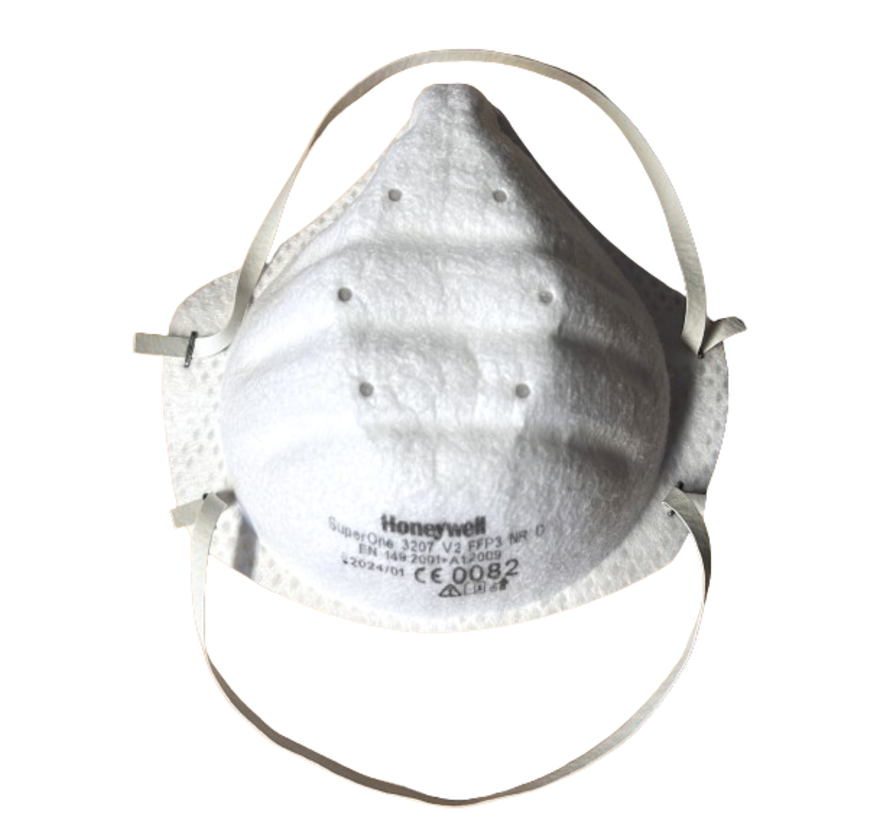Honeywell 3207 V2 - FFP3
- FFP3
- Reliable brand
- Latex, silicone and PVC free
- Can be used with glasses
- Talking is easy
- Soft and pleasant for the skin
Product Use
Limitation to use:
This single-use filtering half-mask should NOT be used in the following situations :
- oxygen concentration is less than 17% (oxygen-deficient atmospheres)
- contaminants or their concentrations are unknown or are immediately dangerous to life or health
- contaminants concentrations exceed levels fixed by applicable health and safety standards or 12 ( 10 in UK, FIN, D, I, S) x WEL*
- in the presence of toxic or radio-active contaminants
- in the presence of gases or vapours
- fire fighting.
Caution:
We recommend users to ensure that the level of protection offered by the respirator is sufficient for the type and concentration of contaminant(s) in the work area.
For use only by trained and qualified personnel.
Leak-tightness is unlikely to be achieved if the mask is worn against a beard or facial stubble.
This respirator does not supply oxygen.
* WEL : Workplace Exposure Limit.
Certifications
EU Category PPE
3
Quality Assurance
ISO 9001 / 2000
EU Certification
0082/236/079/03/19/0371
Certifications
- EN 149+A1:2009
More information can be found via the Honeywell page: Honeywell 3207 V2 - FFP3
Important Additional Information for All Types of Masks and Filters
How do I know when the filters are used up?
If you can smell the product you need protection from, or a similar strong-smelling product, through the gas mask. Tip: For most gas masks, you can test this by trying to smell thinner. This does not apply to dust masks, as they are generally not designed to filter gases.
If breathing through the mask becomes noticeably harder, the filter is too clogged and needs to be replaced. This applies to both gas masks and dust masks.
If the filter or mask becomes visibly dirty, this often coincides with more difficult breathing.
How to extend the lifespan
Try not to use gas masks in dusty environments or as dust masks unless necessary, as the gas filter will clog faster.
Even when using a gas mask, continue to work with good extraction or ventilation.
Store the mask and/or filters in a ziplock bag, grip bag, resealable box, etc., after use to prevent dust and reactions with gases.
Use of masks and filters
Write the date of first use on the bag or box where the filters and mask are stored. This gives you an indication of how old/ how often the filter has been used.
Use only masks that fit well over the nose and mouth to prevent a false sense of security. Choose the right size and make sure the clip over the nose is pressed tightly against the skin.




